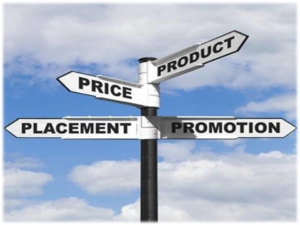
A company needs an effective go-to-market strategy that makes it easy to buy from and sell to. Go-to-market strategies and plans are a blueprint for how the company will reach customers, streamlining and establishing a strong focus on the steps that a company must take to co-create value with customers.
Elements of a Go-to-Market strategy?
The go-to-market strategy should be mapped out and clear for the business to follow and Marketing and Sales teams must be aligned
Consider your operations from the customer’s or prospects’ perspective; what activities will the customer undertake, and in what sequence? Identify gaps in customer engagement and determine how you can most efficiently interact.
Mapping out your strategy also has the benefit of reducing costs, enabling the company’s resources to be focused on areas that benefit customer interaction and, consequently, drive revenue.
Clarify the steps in your go-to-market plan:
Customer actions: What tasks do customers take when interacting with your company? How can you make their interactions easier?
Employee-customer interactions: What rough script should employees follow when they interact with customers? Although the script obviously cannot be followed to the letter, you will find it useful to have a guideline for your marketing and sales teams’ communications with the customer to minimize confusion and establish a standardized quality of service that all customers should experience.
Internal actions: What internal operations and processes will you need to undertake to facilitate employee-customer interactions? These are essentially the “back-stage” operations; although the customer does not see these processes, they enable you to serve your customer more effectively. For instance, if you coordinate information from your Marketing team for your Sales team via a CRM platform, Sales will be able to provide a more personalized customer experience.
Supporting services: What technologies and operations do you need to put in place for everything to run smoothly? This can include assets such as your website, CRM platforms, and branded email accounts.
Examine all your interactions with the customer to gain a holistic, end-to-end view of their engagement processes.
The end of the customer’s initial interaction, whether it be a purchase or a consultation, is not necessarily the end of their engagement! Follow-up is a major determinant of customer loyalty and is often crucial to encouraging further purchases or engagement. Loyal customers lead to more repeat purchases, lower operating costs of servicing, and referrals.
Due to their increased contribution margin and higher retention rate, referred customers have a 16% higher Customer Lifetime Value (CLV) to a firm than a non-referred customer (Journal of Marketing).
Now that we have established why an effective go-to-market strategy is so beneficial, especially B2B, let’s drill down to the dimensions that you should consider when mapping out your blueprint.
The key components
When constructing your go-to-market strategy, evaluate various elements of your organization.
Sales organization
Your sales organization determines how your company is structured to reach customers. Since your go-to-market blueprint lays out the role of your sales team throughout the customer journey, your go-to-market strategy should reflect your sales team structure.
Decide who will be primarily responsible for dealing with customers at different stages of the customer life-cycle and how these interactions should be structured. Will interactions with customers be individually based or team-based? How will you be measuring performance at each stage?
You may also find it beneficial to formally establish the degree of flexibility your sales team will have with customers. Depending on your market strategy, the size and nature of the target market, and the competitive landscape, it may be better to have more rigid guidelines or more individual, personalized, and empowered approaches for your sales team.
With Account-Based Marketing, you might need a high level of flexibility for high-value target accounts; your sales approach and interactions would be tailored to the account. Companies that focus on transactions could benefit from a standardized sales organization in their go-to-market blueprint.
Required systems
Your required systems are the supporting elements you need to interact with customers. This can include marketing and sales structure, processes, and technologies for daily operations, such as data management, communications, etc.
Defining your required systems is an essential step in optimizing your go-to-market strategy. Since your go-to-market involves creating an action plan for your company’s operations, once you establish your required systems, you can identify optional assets as well as extraneous or ineffective services currently in operation. By eliminating unnecessary processes or services, you can reduce costs and maximize efficiency without sacrificing customer value.
Channels & partners
Decide how you will reach your customer segments and through which channels. This gives an indication of where you should focus your marketing and sales efforts.
You can discriminate your customer engagement based on the different channels of interaction and tailor your offerings or products based on channel. For instance, high CLV accounts can be offered services that are customized to their persona’s specific needs or problems.
Consider is your partners. With whom will you need to collaborate to reach your customers? Depending on the nature of your target market, it may be necessary to work with complementary partners to deliver a product or service. Partnerships can also potentially extend your reach.
Design your action plans to accommodate different partners and channels, providing engagement in different customer segments. The more detail you have in your blueprints regarding different customer interactions, the more responsive and personalized your marketing and sales can be.
Marketing mix
The marketing mix is a fundamental part of your go-to-market strategy. How you determine your product, price, promotion, and distribution affects how you engage customers.
Product. What is the product or service that customers should expect? What is your value proposition – how should different customer segments derive value from what you provide? You should also consider the benefits and costs for the customer. This helps you delve into the psyche of your customer to properly map out their journey.
Price. What sort of customer are you targeting with your pricing strategy? Your pricing communicates your positioning to the market. Since your pricing attracts different types of customers, it needs to be optimized to your target customer persona. For instance, a low price relative to competitors attracts price-sensitive customers, which could be valuable for low-involvement sellers who are seeking numbers but might be less valuable for companies offering personalized, high-effort services.
Promotion. How will you first engage and communicate with customers? Your choice of advertising and promotional strategy affects your encouragement of positive word-of-mouth. Your Go to Market strategy should reflect these promotional choices.
Distribution. How should customers expect to find you? This is particularly relevant to your promotions strategy, as specific target accounts can be reached through different promotions and marketing activities through different channels.







Leave a Reply
Want to join the discussion?Feel free to contribute!